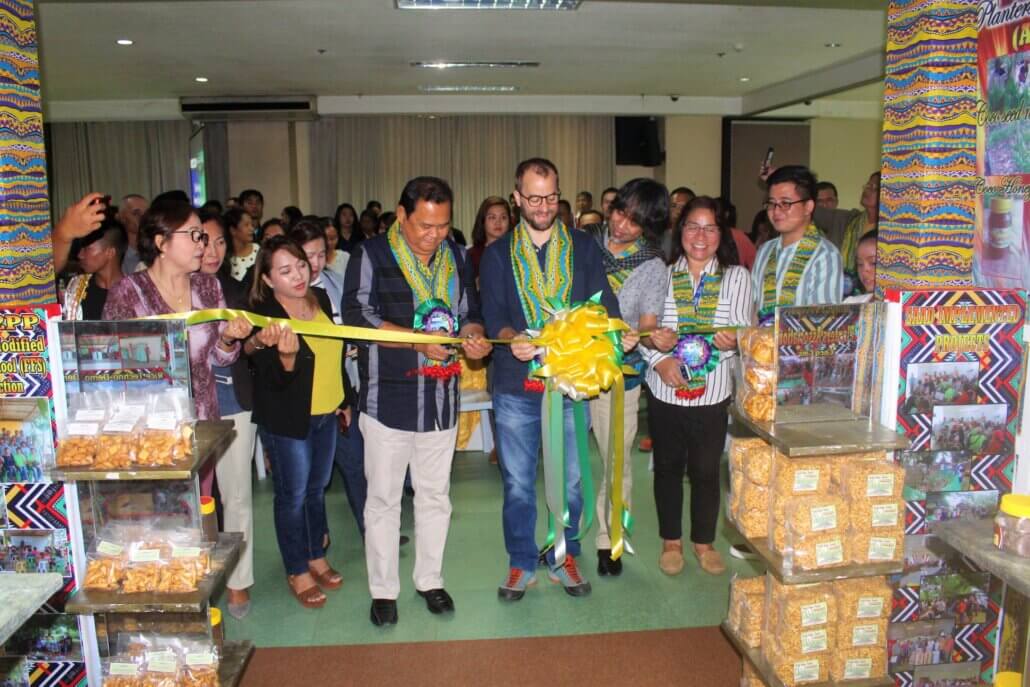Rising from poverty: Action Against Hunger co-launches investment fair in Kidapawan City
ARAKAN VALLEY — Faced with the challenge of massive poverty, civil society organizations (CSOs) linked with the Arakan Valley Complex Project Management Office (AVC PMO), Action Against Hunger Philippines, and the Provincial Government of Cotabato in conducting a two-day investment fair, dubbed as the “Arakan Valley Complex and Tulunan Investment Fair” on September 19 and 20, 2019 in Kidapawan City.
Poverty incidence in North Cotabato, of which the Arakan Valley Complex and Tulunan are part, was recorded at 25.6 percent of the population, according to the Philippine Statistic Authority 2018 report.
The underlying factor of poverty in the valley is attributed to the low market price of farm produce, according to Van Cadungon, Provincial Administrator of North Cotabato. Cadungon was the keynote speaker during the opening of the investment fair.
“Farm productivity and market support programs are priority strategies that need to be implemented in the valley to address poverty,” Cadungon said.
“The investment fair resulted from a participatory planning done among the six municipalities where key development projects intended to spur economic growth in the Arakan valley were identified,” said Kerwin Jade Mallorca, the AVC PMO administrator. These projects are in the sectors of Good Governance, Agriculture, Environment, Health, Basic Social Services, Economic, Education, and Water-related Services, and Infrastructures.

The AVC Investment Fair is a two-day activity that is meant to attract social investors in the area of agriculture, trade and commerce, basic social services, and utilities into the Arakan Valley and Tulunan. The Fair incorporates project pitching, site tours, gallery display of investment opportunities, conversations, and cultural events that are intended to generate external interest in the opportunities present in the Arakan Valley and link local social entrepreneurs, governments, and people’s organizations with social investors.
“This is a breakthrough initiative because for the first time we are creating a venue for community leaders and social investors can come together and collaborate towards economic and social development,”
“This is a breakthrough initiative because for the first time we are creating a venue for community leaders and social investors can come together and collaborate towards economic and social development,” said Jules L. Benitez, Head of Project of “Reinforcing, Instituting, and Scaling Up Efficient CSO-LGU Interaction towards Enhanced Local Governance (RISE).”

Reinforcing, Instituting, and Scaling Up Efficient CSO-LGU Interaction towards Enhanced Local Governance (RISE) was funded by the European Union and implemented by Action Against Hunger.




 Meet Mikkel Cruz, the 5 year-old student from University of Asia and the Pacific – Child Development and Education Center who was able to raise ₱50,730 during UAP’s Race Against Hunger last January 26, 2019.
Meet Mikkel Cruz, the 5 year-old student from University of Asia and the Pacific – Child Development and Education Center who was able to raise ₱50,730 during UAP’s Race Against Hunger last January 26, 2019.

 In Photo: Sittie and her child during a check-up at the Rural Health Center
In Photo: Sittie and her child during a check-up at the Rural Health Center








